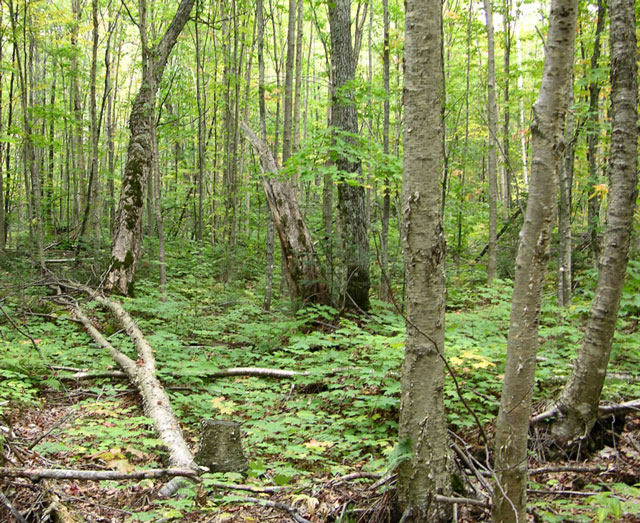The yellow birch is Ontario’s largest native birch tree. It lives an average of 150 years, with some documented as living up to 300 years. The yellow birch is a staple of Ontario’s forests and one of the largest hardwoods in northeastern North America.
The twigs and leaves of the yell birch give off the smell of wintergreen when rubbed – a unique characteristic that makes this tree particularly popular among naturalists. Yellow birch sap can also be boiled down in the spring to make a dark syrup, or fermented to make beer.
Yellow birch trees are particularly popular for planting in community areas and private property because they are often easy to care for. They prefer moist soil and are moderately shade-tolerant. They only need to be fertilized when they show signs of poor health such as discoloured leaves or slowed growth.
Could a yellow birch tree be right to plant on your property? Learn the main characteristics of yellow birch trees and how to care for them.
What Does Yellow Birch Look Like?
The yellow birch tree gets its name from its bark, which is a golden yellow for much of its life.
It is a medium-sized tree, growing up to sixty or eighty feet tall with a canopy 30 feet in diameter. Its foliage is oval-shaped with a round base and pointed tip with a fine serrated edge. In the spring and summer, yellow birch tree leaves are deep yellowish-green. Similar to its name, the leaves turn a brilliant yellow in the fall.
The bark of the yellow birch is yellow-orange for most of its life, but turns a deeper reddish-brown as it ages. It peels away in small, papery curls horizontally on the outside of the tree.
It produces green and brown cylindrical flowers, called catkins, in late summer. These flowers stay on the tree all winter and shed their pollen in the spring.
Where is Yellow Birch Found in Ontario?
Yellow birch is found across Central and Southern Ontario and into some northern parts of the province. It prefers moist, rich soil and is moderately shade-tolerant, making it a commonly found tree in Ontarian forests. They are often found among balsam firs, beech, basswood, and white pines.
The saplings and seeds are a popular food source for animals in Ontario, particularly the yellow-bellied sapsucker.
What are Common Diseases and Infestations Affecting Yellow Birch Trees?
The most common disease that affects birch trees in Ontario is birch dieback. This fungal disease causes the branches on the crown to die off and eventually can lead to the death of the tree.
It most commonly affects birch trees that are already under stress due to drought, winter, or exposure to certain types of herbicides. First, the foliage on the crown of the tree becomes scant or start to curl. The twigs and branches slowly stop producing leaves. Another sign more visible from the ground is that the lower branches develop densely packed foliage – a way for the tree to compensate for its missing leaves.
The bronze birch borer is a wood-boring beetle that is known to attack birch trees that are suffering from birch dieback, cementing their fate. Pruning of yellow birch trees should be done at the end of the growing season in the fall, as the bronze birch borer is active during the spring and open pruning wounds can invite them in. Healthy yellow birch trees are more resistant to this beetle all year round.
A tree with birch dieback will likely die within three to five years.
Another disease that affects yellow birch trees is chlorosis, or a yellowing of the leaves caused by an iron deficiency in alkaline soils. This can be remedied by introducing iron tablets into the soil.
Should I Plant a Yellow Birch on my Property?
When planting trees on your property or in your community, you should always choose native tree species. Yellow birch is a great option for your property as long as you have the space for it to grow healthily. As a shade tolerant species, they are often great choices to plant. They also do not require much extra care in their early years and as long as conditions are right, will grow beautifully on their own.
For more information on native tree species, visit our blog about native trees or contact us. We can help you determine the best trees to plant depending on the environment.
